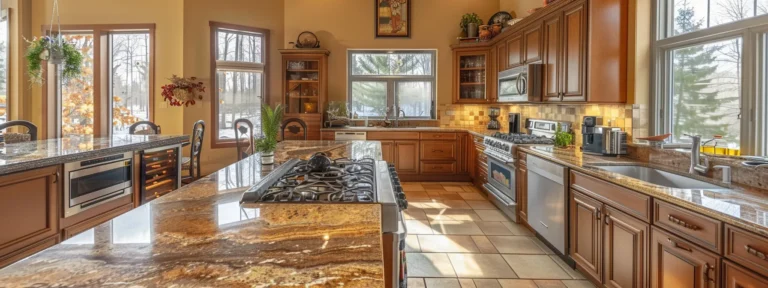Heads Up: When you purchase through links on our site, we may earn an affiliate commission at no cost to you.
Select themes that inspire visitors to take action. Your site should load fast on phones, display clean listing pages, and make it simple to search, save, and contact you. Favor lightweight code, great mobile UX, and smooth IDX/MLS plugin support. The less you fight the theme, the more time you can spend adding listings, neighborhood pages, and lead magnets.
Think in buyer/seller paths. Buyers need quick filters, clear photos, a map, and a sticky “Book a Tour.” Sellers need a visible “Get Your CMA,” short forms, and trust signals near CTAs. Choose themes that let you build those pages in minutes with the Block Editor or a lightweight builder—no heavy page bloat, no quirky shortcodes.
Key Takeaways
- Responsive design ensures clear property details and smooth navigation on all devices.
- Essential SEO elements improve performance and engage more visitors.
- Integration of MLS and property management tools simplifies real estate listings.
- Customizable themes support clear branding and efficient property searches.
- User feedback guides timely improvements in theme performance.
Key Features of WordPress Themes for Realtor Sites in 2025

You want a theme that makes visitors move: search, view, ask, book. That takes mobile-first layouts, fast code, clear navigation, IDX-friendly styling, and flexible property fields. The sections below spell out what to look for and why it matters on a live site.
Importance of Responsive Design for Real Estate Websites
Most traffic hits you on a phone. Your layout has to breathe on small screens. Think thumb reach and clear tap targets. Put price, beds/baths, location, and a strong CTA above the fold. Let the gallery swipe smoothly and keep the map one tap away. If the user has to pinch to zoom, you’re losing them.
Aim for quick wins that compound. Use fluid typography so headlines don’t blow up on narrow devices. Keep buttons tall and spaced. Make forms short and forgiving with input masks for phone and price. Add a sticky action bar—“Book a Tour” for listings, “Get Your CMA” for seller pages—after the first scroll. That bar catches intent in the moment.
Performance on mobile is non-negotiable. Optimize images, defer non-critical scripts, and cut extra libraries. Watch Core Web Vitals, especially LCP and INP. A fast, readable, finger-friendly page keeps shoppers exploring and raises the odds they reach out.
Essential SEO Elements for Realtor Themes
Your theme should ship clean HTML and a logical heading structure. One H1. Descriptive H2s. Short paragraphs. Breadcrumbs that double as internal links. That gives search engines a clear map of your content and helps users keep their place.
Schema support is a plus. You’ll use Organization or RealEstateAgent, LocalBusiness for NAP data, BreadcrumbList for navigation, and VideoObject if you embed tours or seller explainers. Pair that with Yoast or Rank Math for titles, meta descriptions, and canonical URLs. The tools should work together without hacks.
Indexable archives matter. You need neighborhood pages, price brackets, and property types that can rank on their own. Themes that generate clean, crawlable archives make this easy. For deep filter combos, add canonicals so you don’t waste crawl budget. Keep media light. Add concise alt text so images help, not hurt.
User-Friendly Navigation for Property Listings
Keep the top menu short: Search, Buy, Sell, Resources, Contact. Everything else can live inside those hubs. On listing templates, surface the quick facts near the top, then the gallery, then the details. Repeat your primary CTA after the gallery and again near the bottom. People decide in bursts; meet them there.
Search and filters should feel instant. Start with price, number of beds, number of baths, type, and a live map. Show results as users adjust filters—no extra “apply” click. Always include a “Back to results” link and breadcrumbs so users don’t feel trapped on a property page. Dead ends kill sessions.
Tie listings to content that builds confidence. Link neighborhood pages, school info, commute notes, and recent market snapshots right from the listing. That internal web keeps buyers moving and cuts pogo-sticking.
Integration With MLS and Property Management Tools
Themes don’t fetch MLS data; IDX plugins do. Your theme’s job is to style imported content cleanly and keep layouts intact. Look for block or shortcode support that doesn’t break formatting. Test a demo with your IDX provider, then check listing cards, galleries, maps, and forms on mobile.
Mind SEO trade-offs. Some IDX setups render content on the provider’s domain or inside iframes. That can limit indexation on your site. If rankings are a priority, favor integrations that print content to your pages or provide SEO-friendly endpoints. Cache carefully so feeds stay fresh without slowing the site.
For rentals or property management, plan add-ons for calendars, applications, and payments. Keep PII safe and route submissions into your CRM. Use simple, clear copy around these elements so applicants know what happens next.
Customizable Property Listing Features
You need fields that match how buyers shop and how sellers compare. Lot size, year built, HOA dues, parking, school zone, and upgrade notes should be easily added and displayed. Flexible property cards let you test what earns the click: hero image, price badge, or a “new” flag.
Give buyers small commitments that bring them back. Favorites, saved searches, and share buttons reduce drop-off. Pair them with short email or SMS alerts so hot leads return without re-searching. For sellers, drop valuation CTAs onto neighborhood and pricing pages so they never have to hunt.
Editing should be fast and safe. Block patterns for listing grids, hero sections, and CTA rows let your team publish in minutes. If a theme forces heavy builders or fragile shortcodes, you’ll ship fewer updates. Less friction means more pages live, more paths tested, and more leads in the pipeline.
- Instant feedback
- Valuable insights
- Actionable tips
Top WordPress Themes for Realtor Sites in 2025

Pick themes that make real work easier: fast pages on mobile, clean listing templates, and smooth styling for IDX/MLS plugins. You want quick edits in the Block Editor (or a light builder), flexible property fields, and CTAs you can drop anywhere. Below, use the blurbs as setup guides, not hype.
Overview of Popular Themes for Real Estate
Shortlist themes with three strengths: speed, IDX styling, and easy page building. Check mobile demos first. Then test an IDX provider on a staging page to see if cards, galleries, and maps inherit your fonts and buttons. Finally, confirm you can ship neighborhood pages and CTAs without custom code. If a theme slows you down, move on.
Detailed Review of Houzez – Real Estate WordPress Theme
Houzez is a safe pick if you want flexible property cards and a familiar editing flow. It gives you space for quick facts, galleries, a map, and a clear “Book a Tour.” You can add custom fields (HOA dues, year built, parking) and reorder blocks without breaking the layout.
Set it up for paths. For buyers: keep the search bar lean (price, beds, baths, type) and place a sticky “Book a Tour” button on mobile. For sellers: place “Get Your CMA” modules on market and neighborhood pages. Pair Houzez with a major IDX plugin if you need MLS data, and keep the styling simple to ensure pages load quickly.
Key Benefits of WP Rentals – Booking Accommodation WordPress Theme
WP Rentals focuses on availability and bookings, which suits short-term or mid-term rentals. Calendars, pricing rules, and request flows are all front and center. If you manage furnished units or STRs, this saves time and reduces back-and-forth.
For investor leads, build two funnels: “Request Availability” for guests and “Discuss Management” for owners. Keep forms short and route new messages into your CRM with clear tags. If you also need MLS listings on the same site, plan a separate section powered by an IDX plugin and keep the booking stack for rentals only.
MyHome – A Versatile Theme for Realtors
MyHome offers clean listing layouts and a strong search experience. You can surface core details above the fold, keep galleries light, and add badges like “New” or “Open House.” The theme’s field options help you standardize HOA, lot size, school zone, and upgrade notes across pages.
Use it to speed up publishing. Create block patterns for listing grids, neighborhood intros, and CTA rows so your team can roll out pages fast. If you take application fees or deposits, use a payment plugin (e.g., WooCommerce or a lightweight gateway) rather than custom scripts, and keep those flows on SSL with a clear copy about what happens next.
Unique Features of Residence Real Estate WordPress Theme
Residence (often branded as “WP Residence”) shines with custom searches and map/list views. You can fine-tune filters, add saved searches, and keep the “Back to results” link visible so shoppers don’t get lost. The layout supports quick facts + gallery near the top, which is exactly what mobile users need.
Make two small tweaks for conversion. First, repeat your primary CTA after the gallery and near the bottom. Second, add a short trust blurb by the button (“We reply within 15 minutes during business hours”). If you pull in MLS data, style the IDX elements to match your buttons and spacing so the handoff feels seamless.
How to Choose the Right Theme for Your Realtor Site

Pick a theme that helps buyers find homes fast and helps sellers request a valuation without fuss. Start from your goals, then test on a phone. If a theme slows edits, breaks IDX styling, or buries CTAs, skip it. The right pick saves hours every month and lifts leads.
Assessing Your Business Needs and Goals
List what you actually need in the next 90 days. More buyer tours? More seller CMAs? A blog cadence? Your theme must support those paths first: fast listing grids, clean property pages, and a visible “Book a Tour” or “Get Your CMA” on every key screen.
Map your workflows. Who edits pages? How often? If non-developers touch content, you want Block Editor patterns for heroes, listing grids, and CTA rows. No heavy builder lock-in. Tie this to traffic sources—SEO, PPC, social—so your theme’s templates match the landing pages you’ll ship most.
Check market specifics. Do you rely on IDX? Rentals? Investor deal briefs? Your theme should style IDX shortcodes/blocks cleanly, allow custom fields for HOA, cap rate, or year built, and handle a light “deal analysis” layout. Pick what fits your pipeline, not a demo reel.
Evaluating Design and Aesthetic Options
Design should guide action, not distract. On mobile, price, beds/baths, neighborhood, and one primary button must sit near the top. Use readable type, strong contrast, and generous spacing. Ditch auto-sliders; they tank speed and bury CTAs.
Keep the brand simple and consistent. One accent color for buttons. A calm neutral for backgrounds. System or well-loaded web fonts. Build a repeatable page shell: hero → quick facts → gallery → details → CTA. If a theme’s styles fight you, you’ll publish less.
Preview three real pages before buying: a listing template, a neighborhood page, and a valuation page. If any feels cramped, busy, or hard to scan on a phone, move on.
Understanding Compatibility With Plugins
Themes don’t pull MLS data. IDX plugins do (e.g., IDX Broker, Showcase IDX, iHomefinder). Your theme’s job is to style those blocks and shortcodes without breaking the layout. Test a demo: do cards, galleries, and maps inherit your fonts and buttons? Does the “Back to results” link stay visible?
Confirm the rest of your stack. Forms (Gravity Forms/WPForms), SEO (Yoast/Rank Math), caching, image compression, and a lightweight video embed. Add only what helps a path. If a plugin ships heavy scripts that slow search or galleries, replace it.
Plan for rentals or applications if needed. Availability calendar, simple application flow, and payment via a trusted gateway. Keep data capture short and route it to your CRM with tags.
Importance of Support and Updates
You need a vendor that ships fixes on time. Scan the changelog. Look for recent updates, compatibility notes for the latest WordPress and PHP versions, and clear issue tracking. If releases lag, you inherit the pain.
Review support channels and scope. Is there a knowledge base? Forum? Email with real response times? Can they help with IDX styling questions? Create a child theme on day one so updates don’t wipe your tweaks. Stable support saves you from fire drills during launches.
Analyzing Pricing Models and Licensing
Compare total cost, not just the theme price. Add the page builder (if required), IDX plan, form plugin, and any media/CDN costs. Single-site vs. multi-site licenses matter if you run multiple markets. Check how long updates and support are included—six months vs. a year—and renewal rates.
Read refund and upgrade terms. Many vendors offer an upgrade path from single-site to agency. If you’re testing, pick a plan that lets you scale later without starting over. Paying a bit more for a theme that your team can edit faster often returns the investment in the first month.
Essential Plugins for Enhancing Realtor WordPress Themes

Plugins fill gaps your theme can’t: SEO controls, IDX/listings, lead capture, social previews, and speed. Keep the stack lean—add only tools that help buyers book tours or sellers request a CMA.
Must-Have SEO Plugins for Real Estate Sites
Use an SEO plugin to control titles, meta descriptions, canonicals, breadcrumbs, and XML sitemaps. Set a single H1, write scannable H2s, and add short, benefit-first metas for your listing, neighborhood, and valuation pages. Enable breadcrumb output and map it to your theme so users—and search engines—can see the site structure.
Add schema the smart way. Start with Organization or RealEstateAgent, LocalBusiness (for NAP), BreadcrumbList, and VideoObject for tours and seller explainers. Skip types you won’t maintain. Configure index rules so thin tag archives don’t get indexed, and keep deep filter combos behind canonicals.
Finally, wire your SEO plugin to your analytics stack. Track clicks on “Book a Tour,” “Save Search,” and “Get Your CMA.” Measure what ranks and what converts, not just impressions.
Best Property Listing Plugins
Your theme handles styling; a listing plugin or IDX provider handles data. Pick one path and keep it lean. If you publish your own inventory, choose a listing plugin that supports custom fields you care about—HOA dues, year built, lot size, parking, school zone—and clean grid/list templates. If you rely on MLS, use an IDX provider that renders content on your domain, plays nicely with shortcodes/blocks, and respects your fonts and buttons.
Whichever route you choose, test the mobile flow: search → filter → property card → listing page → CTA. Make sure there’s a visible “Back to results” link and that your primary button appears near the gallery and again near the bottom. If the plugin adds heavy scripts or iframes that slow pages, replace or trim features.
Top Contact and Lead Generation Plugins
Forms should be short and fast. Name, one contact method, and an open question field are enough to start. Use input masks for phone and price, reCAPTCHA or hCaptcha to fight spam, and a clear success message that sets expectations (“We reply within 15 minutes during business hours.”).
Connect forms to your CRM with native integrations, webhooks, or Zapier. Tag by intent (“Tour Request,” “Valuation,” “Investor Deal”) and trigger an instant auto-reply by email or SMS. Add a lightweight pop-up or slide-in for high-intent pages only—such as listing pages and valuation pages—not every URL. More asks mean more exits, so keep it targeted.
Social Media Integration Plugins
Keep social simple and purposeful. Add share buttons on listing pages and neighborhood guides, but don’t let them crowd the CTA. Use a reliable plugin for Open Graph/Twitter Card tags to ensure that previews display the correct image and copy when people share.
If you post reels or short clips, embed them selectively and use lazy loading. For Instagram or Facebook feeds, prefer server-side or API-based solutions that don’t hammer performance. Always tag links with UTM codes so you can see which posts generate tours, saved searches, or CMAs.
Performance Optimization Plugins
Speed pays twice—rankings and conversions. Run one caching plugin that supports page cache, browser cache, and preloading. Minify CSS/JS, defer non-critical scripts, and delay third-party tags until interaction. Pair that with an image tool for WebP conversion, compression, and native lazy-load. Keep galleries sharp but light.
Use a CDN and set proper cache headers on media. Audit your plugin stack monthly—disable what you don’t use, and replace heavy add-ons with lighter options. Watch Core Web Vitals, especially LCP and INP, on listing and valuation pages. If scores dip, fix those templates first; they’re closest to your money.
Tips for Customizing Your Realtor Website

Customization should drive action. Use branding, content, CTAs, visuals, and speed tweaks to move buyers to tours and sellers to CMAs—fast.
Branding Your Real Estate Business Online
Build a simple system you can repeat on every page. One accent color for buttons, one neutral for backgrounds, and two legible fonts (headings/body). Keep button shapes, sizes, and spacing consistent so visitors never have to relearn the interface. Use strong contrast to ensure text remains readable on mobile devices and in sunlight.
Make the location obvious. Add your service areas in the header and footer, plus full NAP and office hours. Include a small agent card near key CTAs with a headshot, license number, and a one-line promise (“Fast replies during business hours”). Consistent local signals help both trust and rankings.
Show proof near actions. Place a short review, rating badge, or “recently sold” snapshot next to your buttons. Maintain a consistent tone throughout—clear, friendly, and direct. Avoid jargon. In your About page, tie your story to outcomes buyers and sellers care about: quick tour scheduling, accurate pricing, and smooth closings.
Create a mini brand kit your team can follow. List hex codes, font sizes, button styles, and sample modules (hero, listing grid, CTA row). Save them as Block Editor patterns. Now, anyone on your team can ship pages that look on-brand in minutes.
Creating Engaging Content for Property Listings
Win the scan above the fold. Lead with the best wide photo, a tight headline (neighborhood + key benefit), and a quick-facts block: price, number of bedrooms and bathrooms, square footage, lot size, HOA fees, year built, and parking details. Add a short “Why this home works” paragraph that hits layout, light, storage, and one lifestyle hook (park, commute, schools).
Build belief in the middle. Add a floor plan, a clean features list, and a map with schools and drive times. If investors are part of your market, include a simple rent range or cap-rate example with a link to a deeper calculator page. Keep claims modest and source any data you reference.
Guide the next step with microcopy. After the gallery and again near the end, place two actions: “Ask a question” and “Book a tour.” Under each button, add one safety line like “No spam. We reply within 15 minutes during business hours.” Small reassurances lift clicks.
Help the page rank and convert. Write a plain-English meta description that mentions the neighborhood and the main draw. Use concise alt text on images. Link to your neighborhood guide and recent market snapshot so shoppers don’t bounce to Google to “research.”
Setting Up Effective Call-to-Action Buttons
Pick one primary goal per page and keep the wording the same everywhere. For listing pages, “Book a Tour.” For valuation pages, “Get Your CMA.” Secondary actions—“Ask about this home,” “See loan options”—should appear smaller to avoid competing.
Place CTAs where intent peaks: top of page, after the gallery, after the floor plan, and near the end. On mobile, add a sticky bar after the first scroll so the button is always in reach. Use short, clear labels (2–3 words). Avoid clever phrasing that makes people pause.
Treat CTAs like a flow, not just a button. The click should land on a short form with prefilled context (property address or page title). Show a plain confirmation message and offer two tour time windows. Send an instant email or SMS so the user knows what happens next.
Measure and iterate. Track clicks, form starts, abandons, and completions. If people click but don’t submit, shorten the form or move the trust line (“Fast reply,” “No obligation”) closer to the button. Test one change at a time so you know what moved the needle.
Integrating High-Quality Images and Videos
Plan the shoot like a walkthrough. Capture front approach, main living, kitchen, primary suite, key baths, storage, laundry, garage, and the yard. Keep aspect ratios consistent so grids don’t jump. Write short captions for photos that need context (e.g., “Bedroom 2—faces east, morning light”).
Keep files light. Export photos to WebP, aim for reasonable dimensions, and lazy-load images below the fold. Name files clearly and add concise alt text. This helps speed, accessibility, and image search.
Use video to build confidence fast. A 45–60 second highlight reel works: entry, main living, kitchen, two best features, and the yard. Place the video near the top with captions. Add a one-line summary below it, followed by a button labeled “Book a Tour.” If you have a 3D tour, stack it right after the video so users can choose how they explore.
Mind hosting and playback. Use a reliable host that doesn’t stall on mobile data. Avoid auto-play with sound. Keep overlays simple so the play button is easy to tap. Every extra click costs you viewers.
Optimizing Site Speed and Performance
Set a performance budget and stick to it. Keep total requests low, use modern image formats, and avoid heavy plugins that load on every page. One caching plugin is enough. Defer non-critical scripts, preload key fonts, and keep third-party widgets to the few that drive leads today.
Fix the templates closest to revenue first. Tune your listing template and valuation page for LCP and INP: use a compressed hero image or poster frame, a fast gallery, responsive forms, and a minimal layout shift. Replace slow maps with a static image that expands to an interactive map on tap.
Measure weekly. Check Core Web Vitals in Search Console and run PageSpeed Insights on your top URLs. If scores dip after an install, roll it back or configure it properly. Document what you changed and the result so gains compound over time.
Future Trends in Real Estate WordPress Themes

Trends matter if they speed up leads. Use what actually helps a buyer book a tour or a seller request a CMA. Ignore shiny tools that slow pages or add clicks.
Increasing Adoption of AI and Chatbots
AI should shorten the path to a human, not replace it. Use a chatbot to route intent fast: “Buy,” “Sell,” or “Ask a question.” Collect a name and one contact method within two taps. Then hand off to your team with a clear transcript.
Add smart search, not gimmicks. Let visitors type “3BR near [school] under $X” and return filtered results. Train canned answers for common questions (tour times, disclosures, HOA fees), and always show a “Talk to an agent” button. Measure what the bot can’t answer and fix that on the page.
Keep it light. If an AI widget hurts Core Web Vitals or blocks the main CTA, drop it. Speed wins more deals than clever replies.
The Rise of Virtual Tours in Real Estate Listings
Short videos and 3D tours keep people on the page. Lead with a 45–60 second highlight reel: entry, main living, kitchen, primary suite, and two hero features. Stack the 3D tour under the video so visitors can choose how to explore.
Add context. Caption the tour with key facts buyers ask about—lot depth, storage, and recent upgrades. Place “Book a Tour” under the player and repeat it after the gallery. Compress media and lazy-load content below the fold to keep the page fast on mobile.
Track impact. Watch time-on-page and tour requests per listing. If a tour doesn’t move the needle, consider reshooting or trimming. Better media plus a visible CTA is the lift you’re after.
Keeping Up With Design Trends for Realtor Websites
Trends come and go—clarity sticks. Use clean type, strong contrast, and space that breathes on phones. Ditch auto-sliders. Keep the hero simple: headline, quick facts, one button.
Build with patterns so you can ship fast. Create block templates for hero, listing grid, and CTA rows. Stick to one accent color and one primary button style across the site. That consistency makes every path feel familiar—and easier to follow.
Refresh with purpose. Quarterly, tighten headings, swap any heavy script, and remove low-click sections. New paint is fine. Fewer distractions are better.
Multi-Language Support for Global Reach
If you serve mixed-language markets, make it easy for users to switch between languages. Use a translation setup that keeps URLs clean and lets you localize CTAs, forms, and error messages—especially on listing and valuation pages.
Translate what converts first. Start with your homepage, top neighborhoods, listing template, and “Get Your CMA.” Keep forms short in every language, and add a contact option for quick questions. Show local phone formats and currency to reduce confusion.
Monitor traffic by language. If a locale grows, expand guides and FAQs for that audience. Link them back to your main buyer and seller paths so momentum never stalls.
Sustainability Features in Real Estate Themes
“Green” also means fast. Lightweight themes, compressed images, and fewer scripts cut energy use and bounce rates at the same time. Prefer system fonts or preloaded web fonts, delay third-party tags, and keep galleries lean.
Host video efficiently and avoid auto-play with sound. Cache pages, serve media via a CDN, and prune plugins monthly. A slim site loads quicker on mobile data and keeps visitors engaged longer.
Tell the story where it helps. If a property has solar or high-efficiency systems, highlight it near the CTA with one line and a link to details. Buyers care. Just keep the path to “Book a Tour” front and center.
User Reviews and Case Studies of Top Realtor Themes

Real feedback helps you pick a theme that won’t slow you down. Use these notes like a field guide—what worked, what broke, and what to test before you go live.
Real User Experiences With Houzez
Agents like Houzez for its familiar layout and flexible property cards. The big wins show up on mobile: quick facts near the top, a swipeable gallery, and a clear “Book a Tour.” Most teams ship pages faster once they save block patterns for hero sections, listing grids, and CTA rows.
Common snags are styling IDX elements and overloading the search bar. Keep filters lean (price, beds, baths, type, map). Test an IDX demo page to confirm cards and buttons inherit your fonts and spacing. Add a sticky “Book a Tour” bar on phones. Track three basics after launch: tour requests per 100 visits, time to first reply, and listing-page scroll depth.
Success Stories With MyHome Theme
MyHome tends to shine on clarity. Listing templates stay clean, and the search experience feels quick if you resist extra widgets. Teams report faster publishing when they standardize custom fields—HOA dues, lot size, parking, year built—and reuse them across markets.
Conversion lifts often come from simple moves: repeat the primary CTA after the gallery, add a short trust line near the button (“Fast reply during business hours”), and place neighborhood links under the quick facts. Tie results to numbers that matter: saved searches, tour requests, and consults booked from seller pages.
Case Study: A Redux of WP Rentals Implementation
WP Rentals is built for availability and bookings. It works well if you manage STRs or mid-term rentals. The cleanest setup splits funnels: guests use “Check availability,” owners use “Discuss management.” Keep each form short and route both to your CRM with clear tags.
A common revamp that pays off: trim heavy add-ons, cache carefully around calendars, and preload key fonts. Then stack media light—hero image, short video, and only the photos that sell the space. After changes, watch three things weekly: calendar inquiries, completed forms, and first-reply time.
Analyzing User Feedback and Theme Ratings
Read reviews for patterns, not one-off complaints. Look for notes on mobile speed, IDX styling, and how easy it is to edit with the Block Editor. Scan changelogs for recent updates and WordPress/PHP compatibility. Long gaps in releases are a red flag.
Before you commit, run a hands-on test. Stand up a staging page with your IDX provider, drop in your brand fonts/colors, and check the mobile flow: search → results → listing → CTA → form → confirmation. If anything feels heavy or breaks your spacing, pick another theme.
Frequently Asked Questions
What features mark reliable Realtor WordPress themes in 2025?
Reliable Realtor WordPress themes in 2025 support mobile responsiveness, fast load times, built-in IDX integration, user-friendly page builders, and SEO-optimized code for higher search rankings. These themes help you generate leads and boost real estate investing success.
Which themes are best suited for realtor websites this year?
Responsive, mobile-friendly real estate themes that emphasize clear visuals, streamlined property search, and intuitive navigation are best suited for realtor websites this year, ensuring an optimal user experience and SEO performance.
How do you select a proper realtor WordPress theme?
Examine design suitability, mobile responsiveness, SEO integration, and customization options. Verify compatibility with tools like Carrot and confirm the theme supports best practices for real estate websites, ensuring your online presence appeals to investors.
What plugins improve the Realtor theme functionality for SEO?
Yoast SEO and Rank Math boost the Realtor theme’s performance with on-page optimization and XML sitemap generation, while a caching add-on speeds up load times. Carrot integration effectively supports local SEO for real estate investors.
Where can you find user reviews and case studies?
User reviews and case studies can be found on reputable websites and in our blog posts. Carrot’s platform offers detailed pages featuring feedback and examples that illustrate successful SEO strategies for real estate investors.
Conclusion
Speed and clarity beat fancy. Pick a lightweight theme, keep plugins lean, and ship clean layouts with one clear CTA per page. Fix the basics—image sizes, caching, font loads, lazy loading—and test Core Web Vitals after every change. Keep IDX or listings fast, place reviews near your forms, and track calls and submissions, not just traffic. Small, steady improvements compound into more showings and signed agreements.
If you want help choosing a fast theme, trimming plugins, and wiring conversion paths—or mapping a clean move to Carrot—you can get a performance-first site blueprint, and we’ll lay out a 90-day plan with page templates, speed fixes, schema, and tracking.















